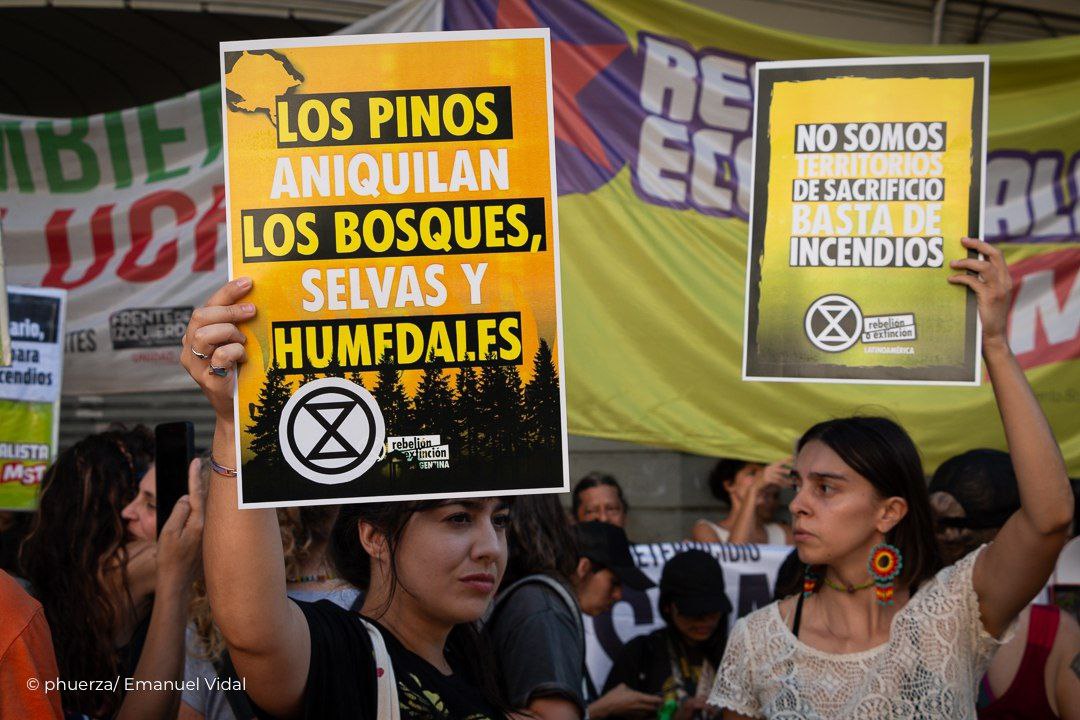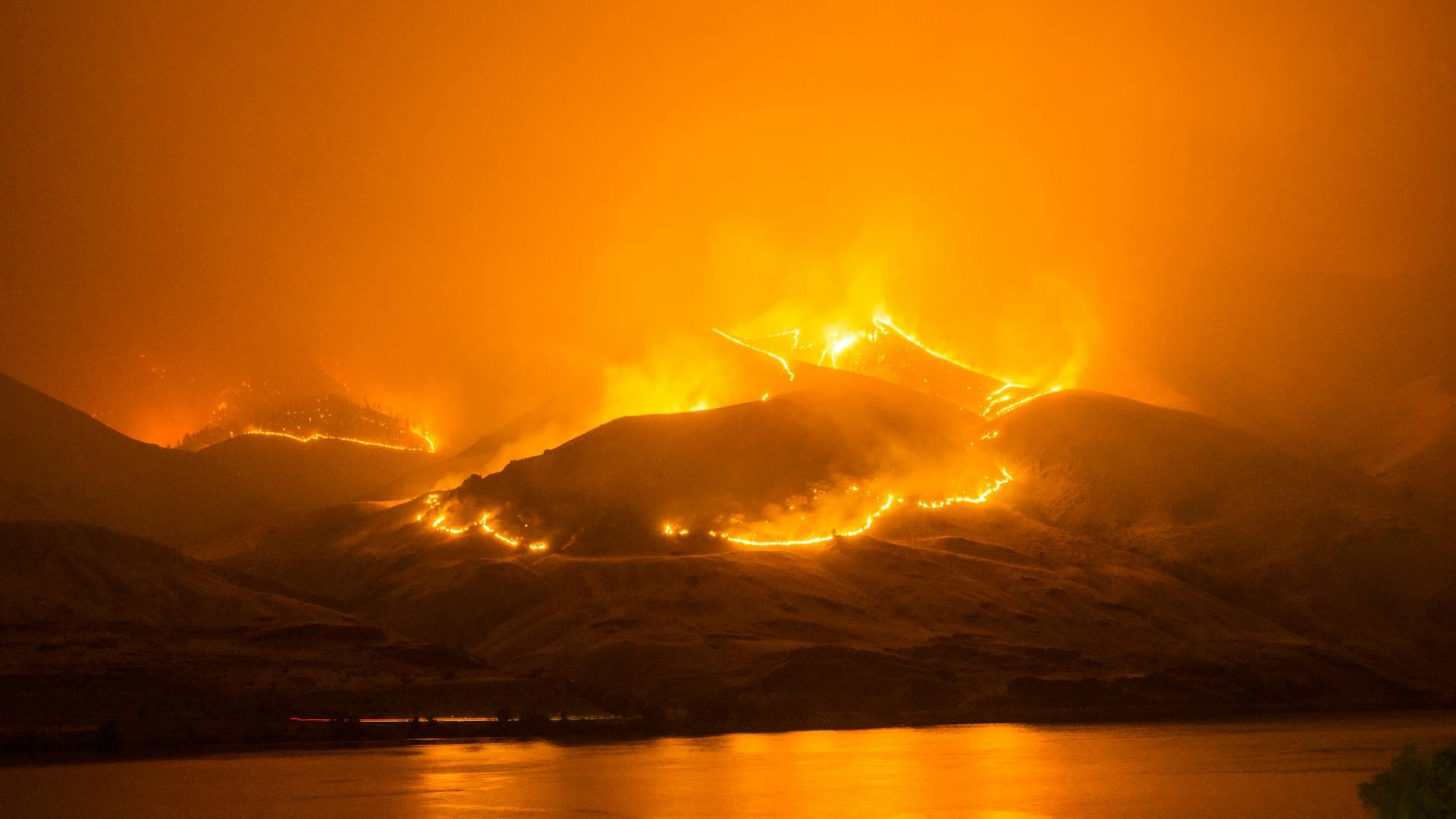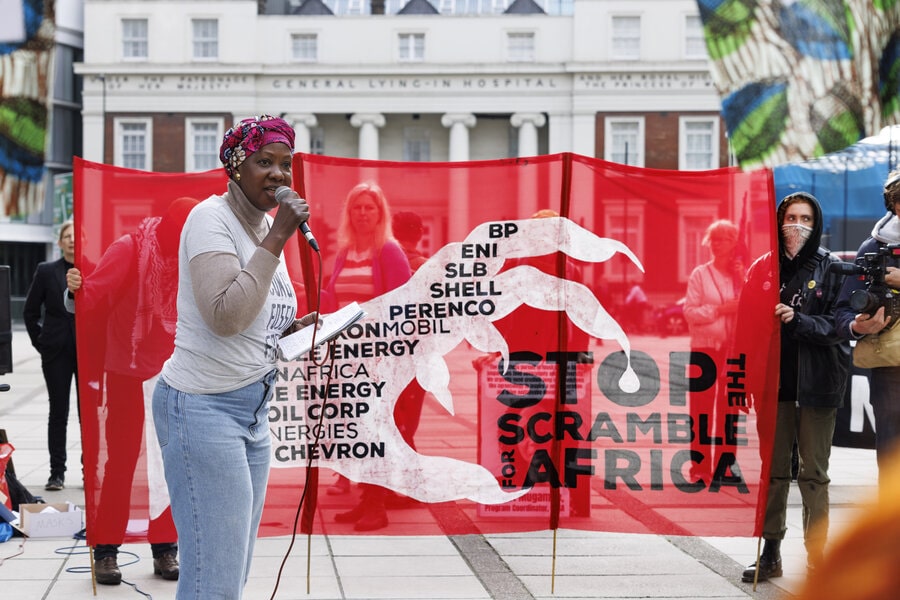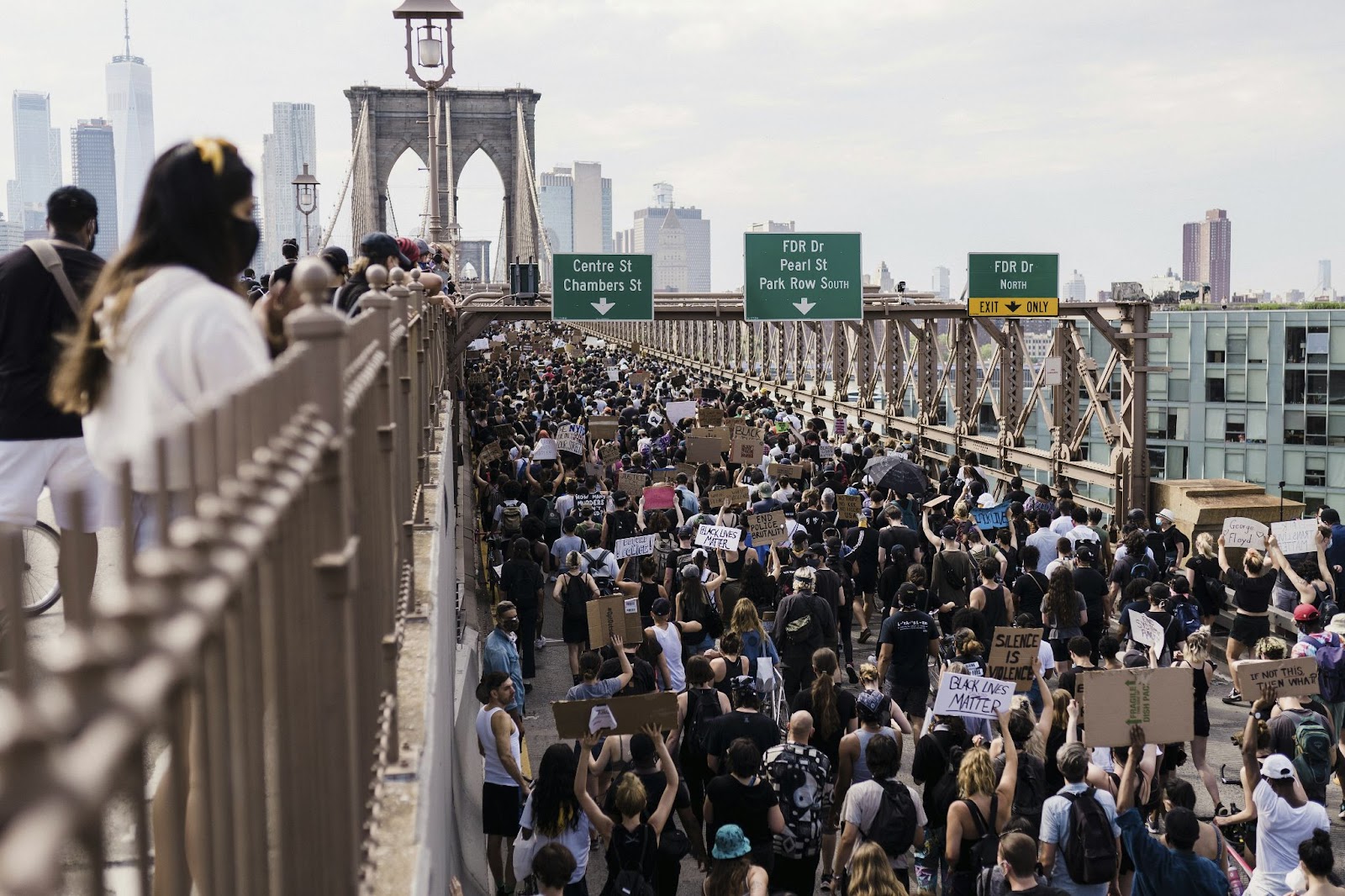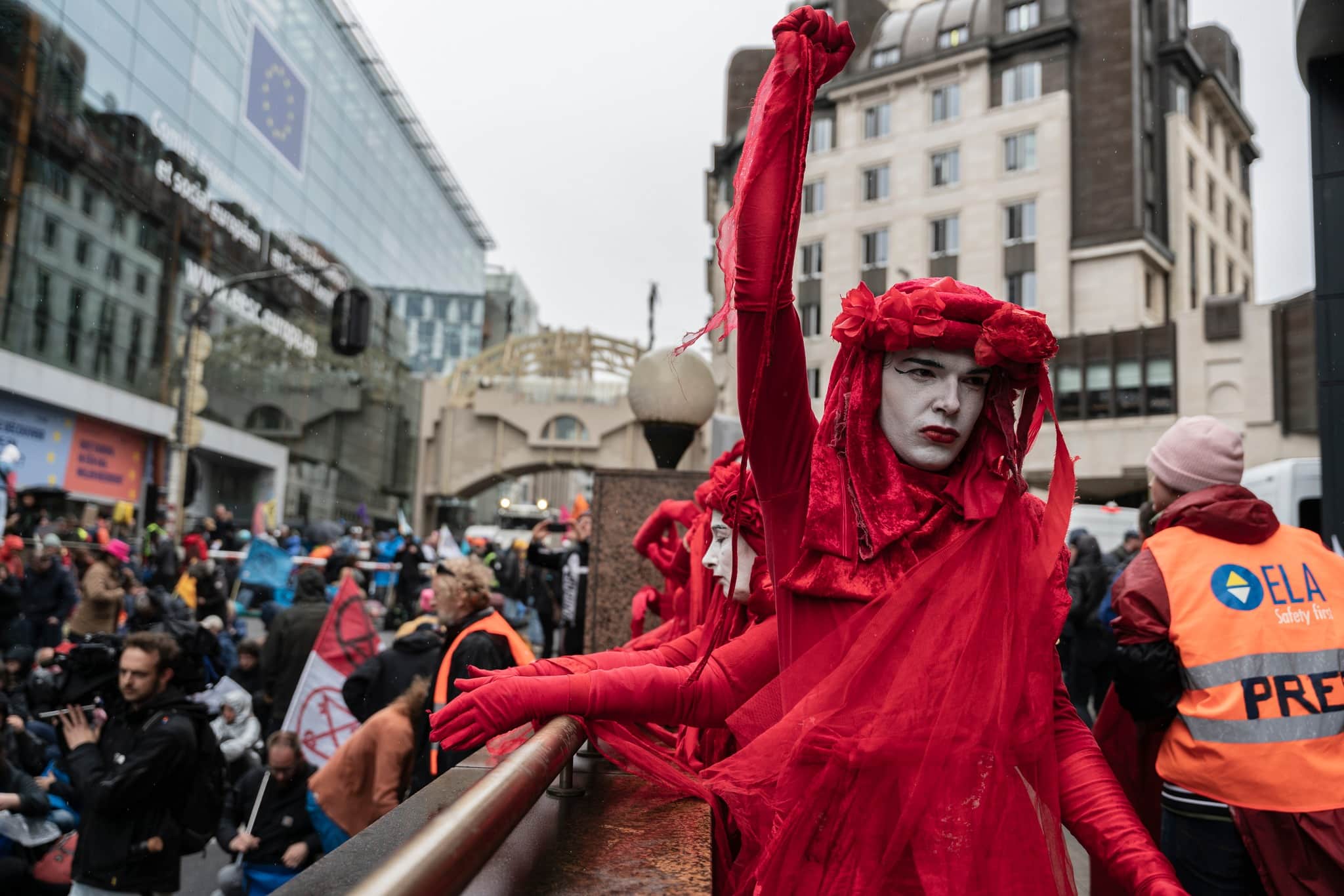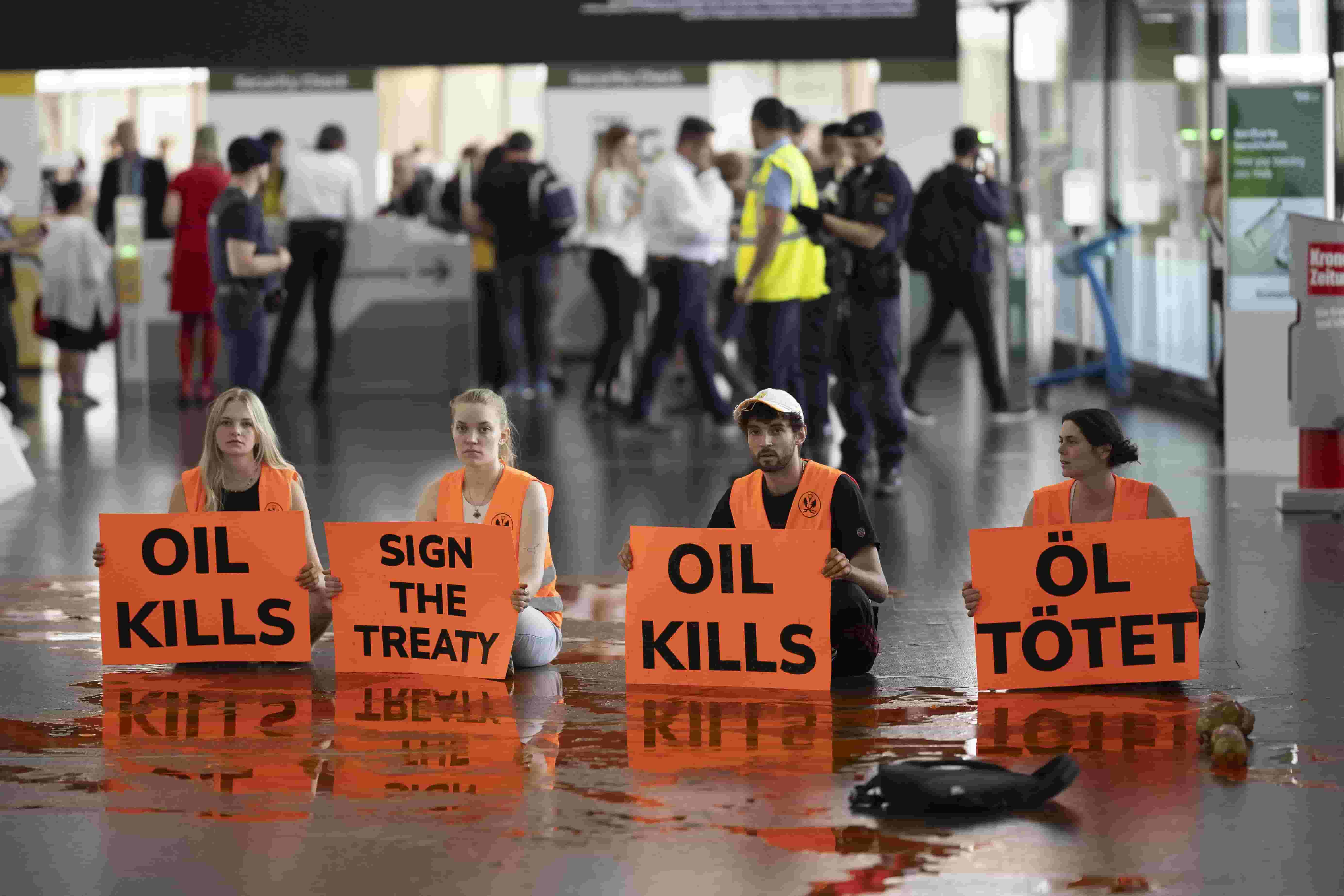This interview was first published on Writers Rebel.
José Gualinga is a leader of the Native People of Sarayaku, an indigenous Kichwa group with 1400 inhabitants living in a remote part of Ecuador’s southern Amazon. Known for their defence of the rights of nature and indigenous peoples, the Sarayaku call themselves the People of Noon, referring to an ancient prophecy of their ancestors claiming that they would be a pillar of resistance after other communities had surrendered, a beacon of light as strong as the midday sun.
In 2012, the Sarayaku won a historic victory at the Inter-American Court of Human Rights, which found that the Ecuadorian State had violated their rights by allowing an oil company to prospect in their territory without consultation. A turning point in the case was when José’s father, Don Sabino Gualinga, the spiritual leader of Sarayaku and their most eminent yachak (shaman), then aged 92, took the witness stand. He was asked about the impact of the 1,433 kilograms of explosives that had been planted in Sarayaku territory by the oil company, accompanied by armed military personnel. Referring to the invisible beings that had been disturbed by the explosions, Don Sabino said that “half of the lords of the jungle are no longer there”.
“It is a living forest. There are trees and medicinal plants and all kinds of beings… Many hid, others died when it burst. They are the ones who maintain the jungle, the forest … All of those who wish to cause damage, they don’t understand what they are doing. We do understand it, because we see it.”
The same year, the Sarayaku created the Kawsak Sacha (Living Forest) Declaration asserting that, as a living entity, their territory is subject to legal rights and demanding that these rights be upheld. The proposal was presented at the global climate change conference, COP21, and the President of France, François Hollande, in 2015, and to the Ecuadorian Government in 2018. The Sarayaku have also launched a professional football team to spread the word about oil exploitation in the Amazon; sailed a canoe down the Seine; and created a documentary, Children of the Jaguar, which won Best Documentary at the National Geographic Film Festival in 2012.
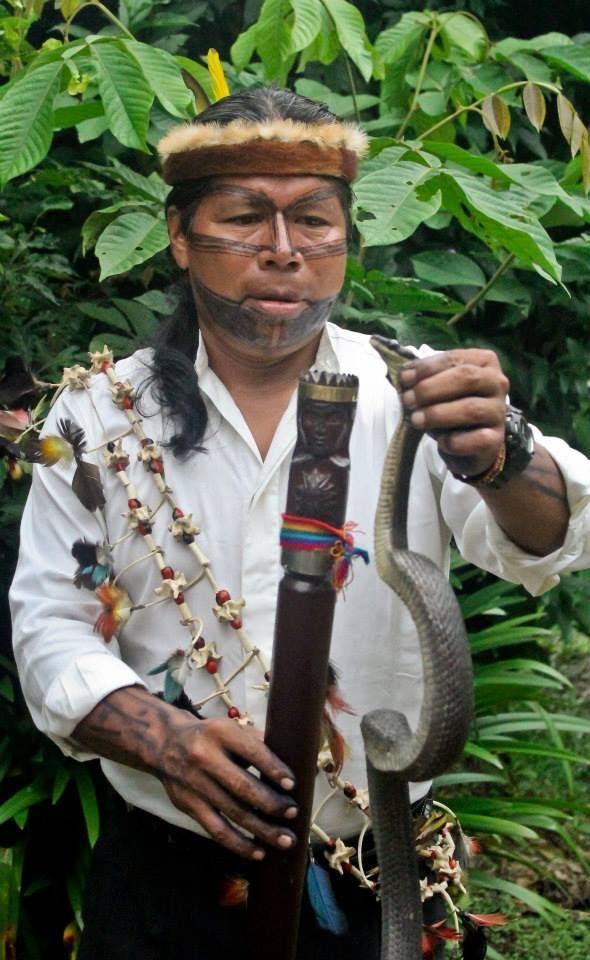
In 2020, the Sarayaku are once again under threat, with the Ecuadorian Government’s plan to auction 3 million hectares of largely virgin rainforest to oil companies, including nearly all the Sarayaku territory. To represent their peaceful resistance to extractivism and commitment to defend the Kawsak Sacha (Living Jungle), the Sarayaku are planting a perimeter of flowering trees around their territory. Known as the Sisa Ñampi, the Border of Life or Living Path of Flowers, it currently stretches for 100km and will take decades to complete, eventually encircling their territory of 135,000 hectares, symbolising the fragility of life, and the ephemeral limit of existence between life and death.
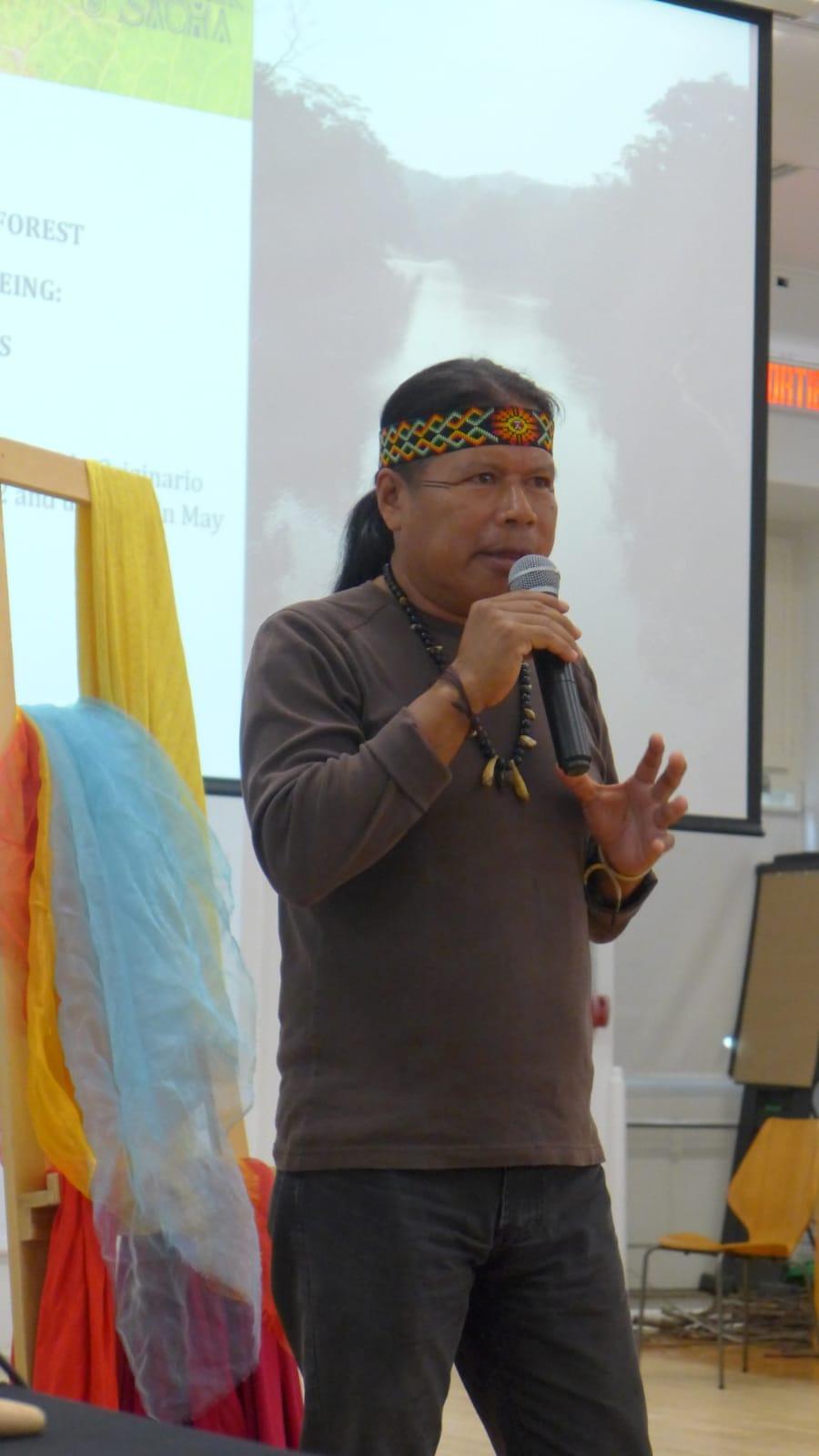
WR: How has the pandemic affected the Sarayaku and how is the community dealing with it?
JG: This disease is unknown to the people of Sarayaku, as were the historical diseases introduced by the first rubber tappers. Back then, it is told that many Sarayaku people died of smallpox and measles, there were corpses all over Sarayaku and scenes of desolation. At that time, many people fled into the remote jungle to avoid death. Some never returned.
During the first days of the current health alert, many Sarayaku families who live in the cities returned to their lands in the jungle to avoid being infected. This made the spread of the virus within the community inevitable, despite the controls and resolutions that we adopted. At the same time, the Bobonaza River burst its banks, causing severe flooding and devastating homes and crops. This was a disaster for us and put the community in an extremely vulnerable state.
The pandemic affected community social life, mobility, economic and food sovereignty, health and education. Many families went into voluntary isolation, retreating into the remote jungle where we have our purinas or tambos (huts far from the community where we go to rest, hunt, fish, and be in connection with the world of the Living Jungle). This was an effective preventive measure that ensured food security and health. However, these relatively untouched places conserve the largest reserves of fauna and flora, and these natural resources started to become scarce due to the long stays of the families who were depending solely on hunting, fishing and gathering.
In the end, the Sarayaku people fought the virus alone, with no state assistance. In this chaotic situation, ancestral knowledge was our spearhead and strength in defeating this tiny but deadly virus, enabling us to confront, resist, and eliminate this foreign body. With the use of rare, little-known medicinal plants we have managed, little by little, to overcome and coexist with the virus. We continue to use medicinal plants, barks, lianas, roots, fruits and tubers to strengthen defences and immunity.
The pandemic provided an opportunity for many families who had forgotten these ancient practices to regain their ancestral wisdom. With our historical experience of struggle and resistance, the Sarayaku people returned to their legacy of the ayllu (extended families) and the minga (community collective work). With the unity and solidarity of national and international friends and allies, the pandemic has been a learning experience, bringing the reflection that we are a fragile and vulnerable world, but that together we can make life more just and humane.
WR: How can the philosophical thought of the Sarayaku (known as Tiam) help to combat climate change?
JG: The world of the forest and the ancient cultures that still coexist in communion with the Living Jungle, the jungle of beings, can inspire complex and philosophical thoughts. We are inspired to reflect on the cosmos; on traditional ways of life based on hunting, fishing and agriculture; on medicine, sacred plants, sociocultural themes, history and spirituality.
Living off the natural resources of the forest in the 21st Century allows us to maintain resistance against the aggressive globalized world of the market, in which most of the citizens of the planet are immersed. This principle of life has allowed us to think that it is possible to coexist, respecting the balance of the earth and using only what is necessary to live.
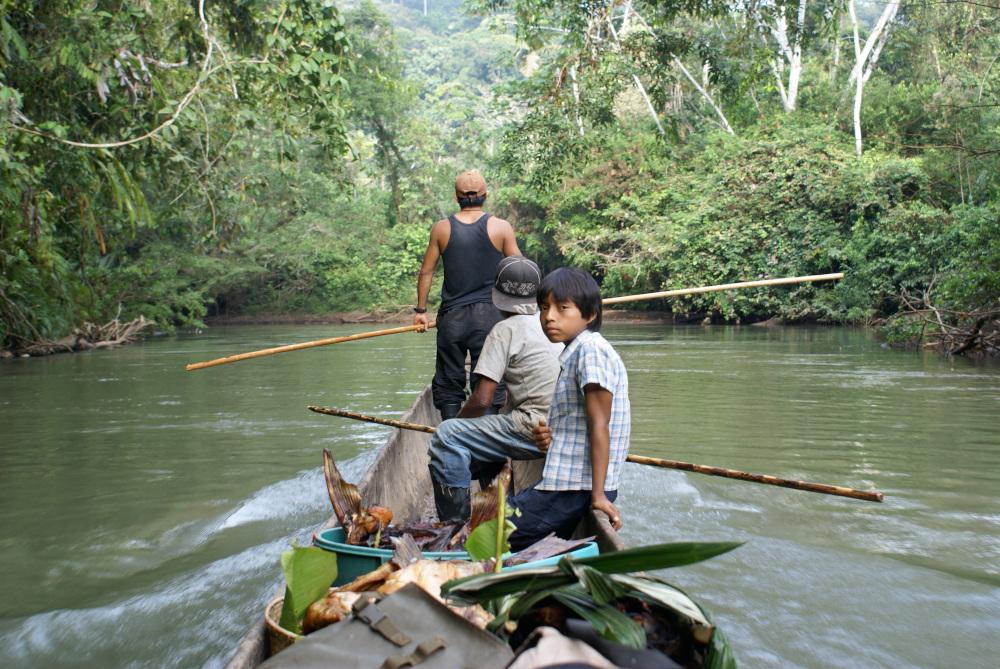
The people and leaders of Sarayaku do not want to be left behind in a static conformist way just waiting for solutions. On the contrary, we have decided to be part of the global solution by contributing with our experience, thought, knowledge and philosophy of life from the belly of the living forest. The peoples of the native communities of the Amazon are those in closest contact with the earth and communion with the beings of the Living Jungle, and the Sarayaku are among those peoples.
Climate change will only be resolved if we actively seek solutions. Global citizens must undertake a long road to resistance and peaceful struggle, towards a different perspective that we call Tiam. By itself this philosophical thought is only a form of knowledge, but it can be made reality if each and every one of us participates in the minga (collective community work).
Tiam is a counterpoint to the dominant worldview, which sees nature as “other”; as an object for exploitation. This has led to imbalance and severe climatic changes, as well as the current pandemic. At the heart of our philosophy lies the understanding that we live as an embryo in the womb of the Pachamama (Mother Earth). Only in this way will nature be respected, will we live harmoniously, benefiting from the resources that the Pachamama bestows on us. We believe that if the human being accepts this way of life, the pain of the planetary wound will be felt, healed, and life will be born again.
More than ever, we believe that humanity needs to once again feel the earth; to recognize and declare that the seas, glaciers, volcanoes are alive, living; to feel coexistence within ourselves; to realize that we are nature itself.
Tiam proposes the creation of new indicators of wealth and value, which should measure the richness of a healthy and fertile land, abundant fauna, uncontaminated rivers, life in solidarity, sharing, unity, and the equitable distribution of wealth. It suggests radical changes in the global education system to incorporate this philosophical thought at every stage, from the family unit, through early educational centres to the highest level of study.
Indigenous Peoples are already contributing towards global climate change solutions by taking care of their territories, which are mega-diversities of living beings. The Sarayaku conceived the Kawsak Sacha (Living Jungle) life project as a powerful nucleus and epicentre, so that through these invisible beings, who are conscious and therefore to legal rights, we can regulate the balance of the earth and together we can fight climate change.
The phenomenon of climate change and the floods we suffered in March do not surprise us. These are the reactions of a powerful force in response to the harmful effects it faces. It is the same force invoked by our taytas or yachaks (shamans) to heal the sick and restore life. Water is a living being and its form represents health and freshness. Its strength is so powerful that it can destroy everything, or it can heal and leave the earth clean and fertile.
WR: How have the ancestral stories of the Sarayaku passed from generation to generation? Is there an ancient story that is most iconic for the Sarayaku?
JG: History was passed down to us orally by our fathers, mothers and elders. When we were children, stories were told to us on rainy days, in the chacras (food gardens), before sleeping, in the hunting houses in the jungle, when we were plucking out our parents' grey hair, or during jayawaska (ayahuasca) rituals. This is how we learned from many past lives.
Sadly, these traditions are being lost due to their replacement with the western educational model. From one to the other, all the ancestral stories are relevant and fundamental; stories of rivalries, of the skills and abilities of iconic characters, of legends and origins. Each extended family has its own history, there is not a single history for the whole community due to a diversity of human groups that migrated to Sarayaku, such as Naporunas, colonists, Urayrunas, Sapara, Achuar.
The most important aspect of our history is that Sarayaku was founded by Ramón Gualinga, father of Baltazar Gualinga. Also called Pandu, Baltazar was a person who could transform into a jaguar and was King of the wild boars.
The elders say that the Sarayaku are the People of Noon, in reference to our principles, dignity and courage. We are the dutzi llakta (a town and its people when the sun is in the middle of the sky at a single point). According to an ancient prophecy, the Sarayaku will resist to the end, even after other peoples have surrendered.
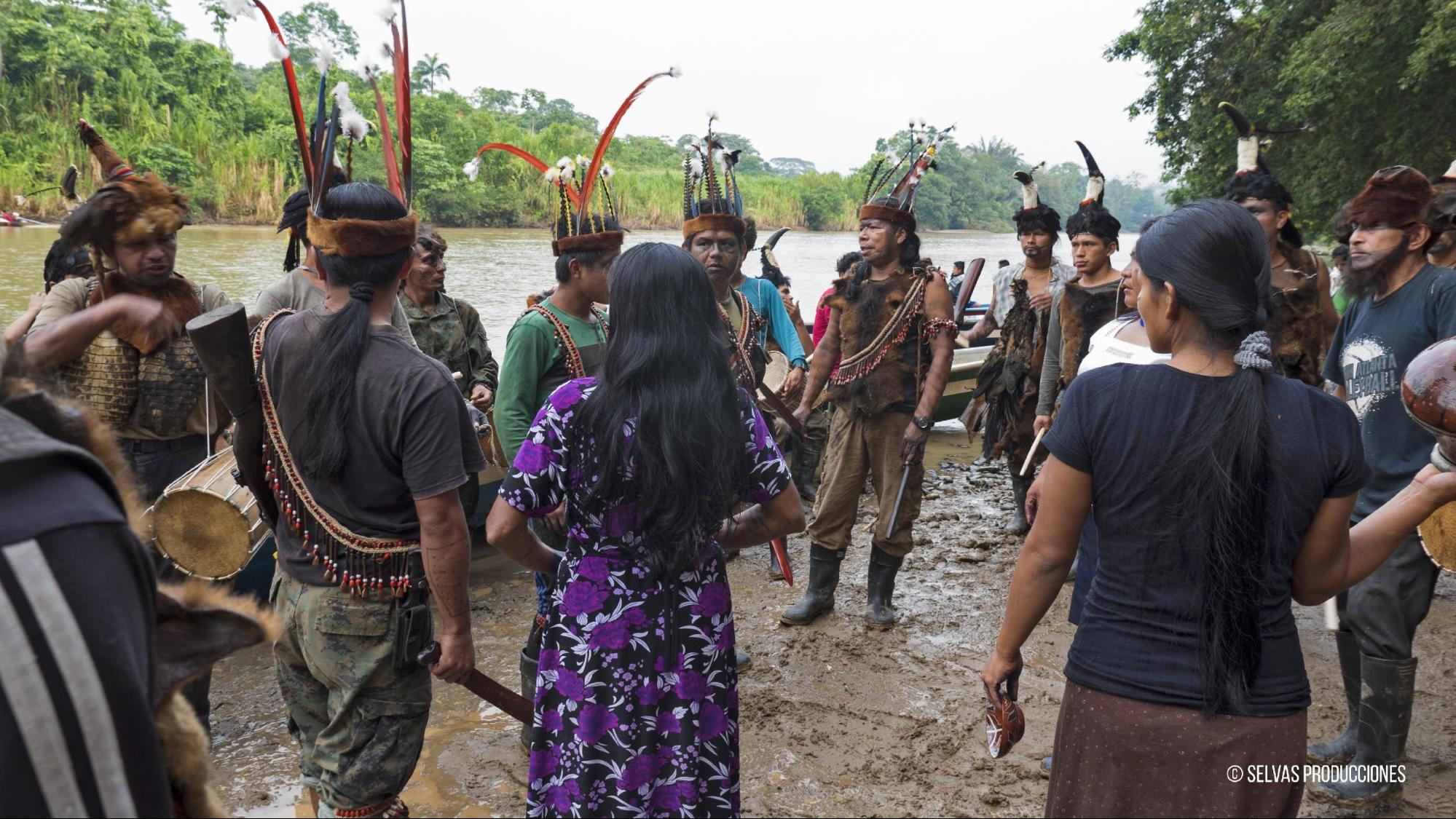
Another story tells of the defeat of the Shirapas, now known as the Shuar, in a war commanded by Santiago Gualinga, who grew up with his abducted mother after his father was assassinated.
There are two stories that are most relevant for me personally. One is about my parents, especially my mother, who grew up an orphan in the middle of the jungle, in a family of very powerful yachaks (shamans), who were at the same time refuted and persecuted.
The other story on to which I have projected my political vision of struggle is about a person who battles a giant boa to liberate his people. The boa is devouring everything and the only way to vanquish it is with a bamboo knife, not an iron knife. This story moved me a lot. We used it as the basis from which to direct the struggle and peaceful resistance of the Sarayaku people, as symbolised by the flower, the Living Path of Flowers. After reading the story, I came to a conclusion about the meaning of the bamboo knife and the iron one. In the resistance and struggle of Sarayaku and the native peoples, the bamboo weapon was fundamental because it represents the powerful knowledge that our world possesses; our wisdom, art, culture, history and philosophy. The iron knife, in contrast, represents violent struggle; the armed struggle that causes serious ongoing social and political problems for so many peoples. The transformative story of the bamboo knife has inspired our global visions and concrete actions. It gives us the strength to resist peacefully, without violence.
WR: According to Sarayaku's worldview, the ability to communicate with the living jungle is considered the highest form of knowledge, only achieved by the best yachaks (shamans) like your father, Don Sabino Gualinga. How does your father see and communicate with the spirits of the forest? Are there any young shamans with this ability?
JG: I consider the philosophical thought of the Kawsak Sacha (Living Jungle) as the most advanced wisdom on earth. The coexistence with non-visible beings such as Amazanga, Sacharuna and Nunguly, the protectors of fertility and the abundance that balances life, is a system of cultural education of its own. The way of life based on symbiosis with these beings is a fundamental and concrete principle.
Therefore, for us, the lagoons have life, the beings are present there, and in the swamps. The trees are human beings that, together with the sacred waterfalls, grasslands and hills, make a daily millennial life system that continues to maintain the ecological balance of the Living Jungle or the Pachamama.
The yachaks intertwine with these beings through visions, communicating and agreeing to maintain friendship and sustain the balance of abundance and fertility. The yachaks communicate and transmit these teachings to us and demand us to respect and be humble in front of these beings, the owners and masters of life, of biological richness.
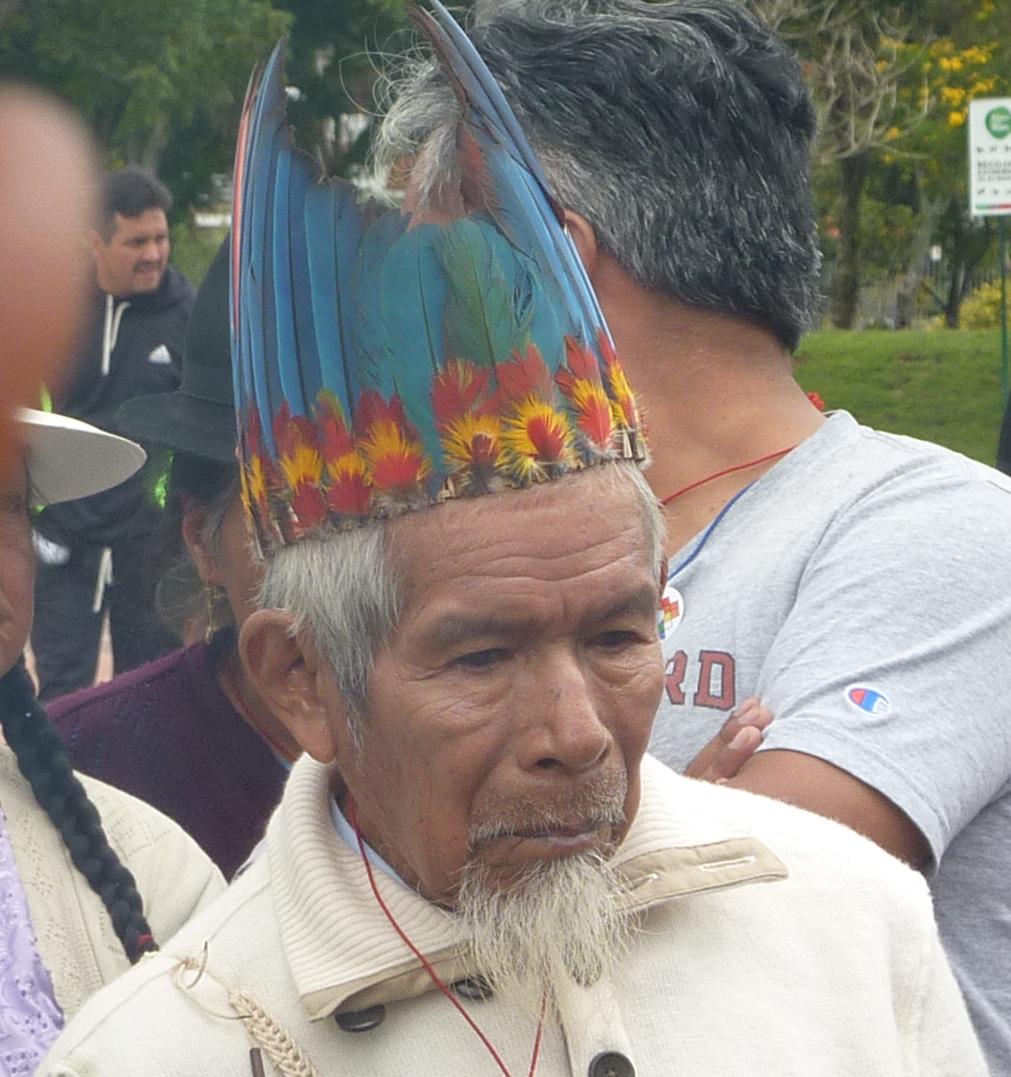
The most important aspect of this knowledge is that the entire society is educated to comprehend it as a way of life, in order to continue coexisting in harmony with the Kawsak Sacha (Living Jungle). Don Sabino Gualinga, like other experts in this field, is a wise man who has always advocated and spread the concept that the jungle is living, with all the beings, owners and masters who take care of and guard the source of life.
In Sarayaku there are several young people who have started the initiation process to become yachaks, to become experts in healing and achieving communion with these beings through visions. However, things have changed since the yachaks of our parents’ generation, such as Don Sabino, who followed a long process of abstinence, a strict diet, a hard and sacrificial apprenticeship.
Though the knowledge of today’s youth will be renewed and modernised, it is based on the same principle: that wisdom will continue to be strengthened via the Living Jungle, including the visions that allow us to enter into communion with the protective beings.
WR: How do the Sarayaku People maintain unity, when other indigenous peoples have been divided by the oil companies?
JG: Unity is not based simply on an organizational body of a people, but instead on a historical and cultural principle. The unity of the Sarayaku arises from the legacy of our ancestors, from the great stories and prophecies that have led us to consider ourselves as the People of Noon, descendants of the Jaguar, children of Amazanga Runa.
Other nationalities, let us call them communities or peoples, their unity is maintained in a superficial way, through an organisation. While the statute of the organisation may be recognized by the competent authorities, the people lack the background of using their history and wisdom as a strength. When the unity of a society, or let's call it a cultural civilization, of the Amazon forest is founded on historical and cultural principle, the oil companies cannot break it.
The Sarayaku act under the principle of symbols and behaviours of different species, such as the strength of ants, the commands of birds, etc. We are also guided by our spirituality and use of ayahuasca as the sacred plant that allows us to orient ourselves in the world.
WR: How could a western activist movement like Extinction Rebellion learn from the indigenous worldview and be founded on the principle of interconnectivity rather than individuality?
It is not necessary to completely adopt the native peoples’ way of thinking. However, there is a lot of knowledge in our worldview that could contribute to society and raise awareness in other cultures of the world. If native peoples, who are also predatory and consumerist human beings, have managed to preserve forests until today, in the 21st century, that means it must be possible to find a solution to the climate, social and economic crises that humanity faces.
What capitalists might call the “subsistence” economic systems of native peoples may be considered insignificant within a macroeconomic system, but our economies are based on a structure that is essential to lead an individual and collective life. Our systems of rotary or circular agriculture, hunting, fishing and gathering, are in fact economies of consumption, but their principle of sustainability is what interests us.
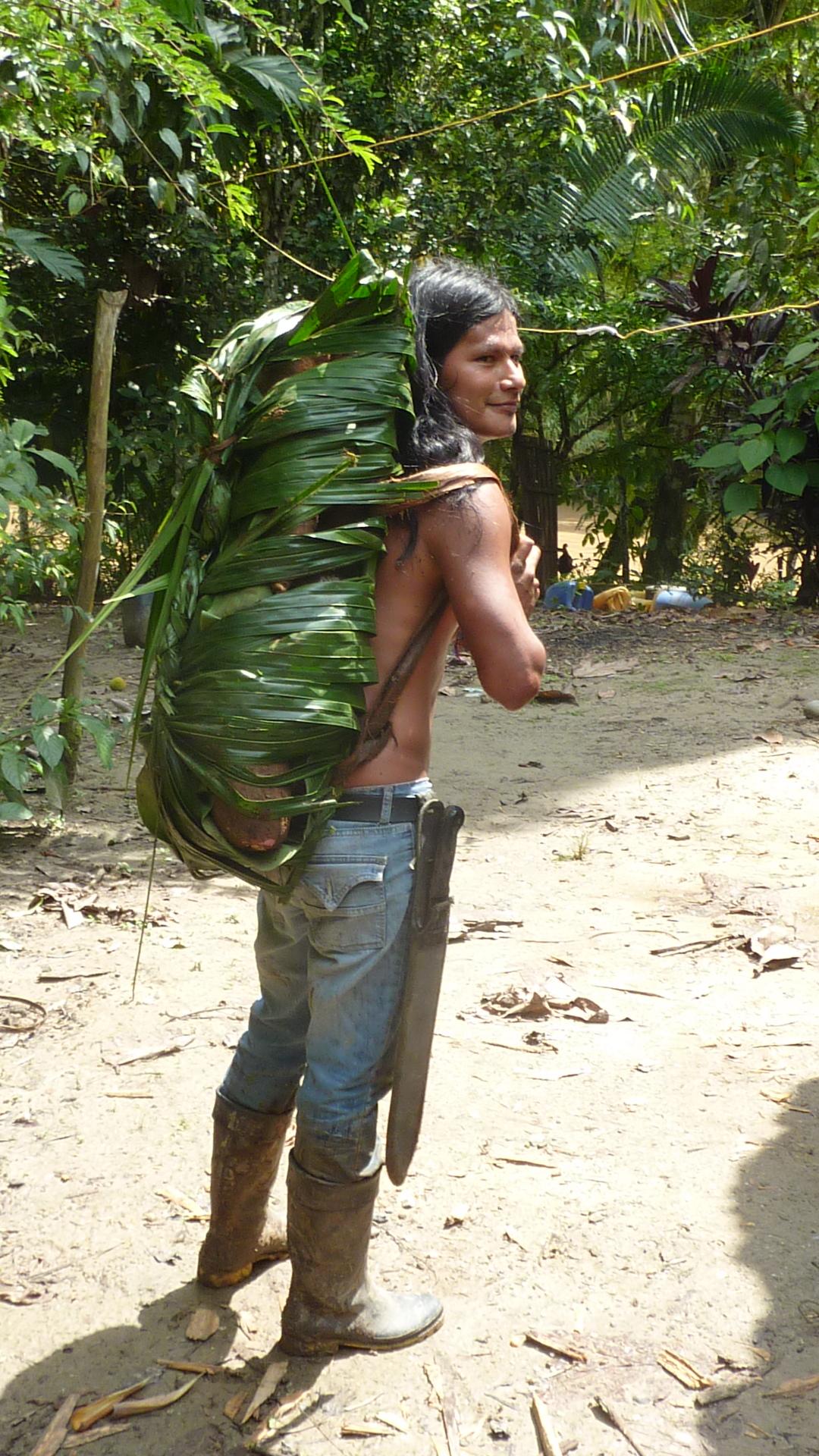
There is much more to the traditional practices of hunting and fishing than the simple art of killing an animal. These practices go beyond simplistic food consumption and are, in fact, related to the principle of the Living Jungle. From her, comes abundance, the market, health, and the connection with the other beings who regulate the fertility of the earth. So, it is about the form and conduct of the collective individual who assumes within himself the wisdom to use this resource that feeds us each day, in a balanced and rational way.
The philosophy of Tiam states that the economic model should be proposed from this logic, i.e., that the human being is not the priority or essential factor in society but, on the contrary, the land, the jungle, the rivers, everything that makes up Life itself, are the fundamentals upon which we depend. With this shift to a different perspective, a different vision, society in general would no longer treat the resources of the living forest as mere objects of market value and exploitation. Human capacity would be the most advanced, behaving with deep respect to use resources in a harmonious and necessary way.
As you can see, this contribution of knowledge is fundamental, but it’s difficult to share it in an individualistic and selfish society accustomed to consumption and competition.
Interconnectivity translates into creating the ability to understand and connect through invisible networks with cosmic life forms who are similar to us, but are not visible. These are the protective beings that create fertility, those who give us the wealth of emotional happiness and spiritual inspiration, those who orchestrate Sumak Kawsay (Life in Harmony).
WR: How do the people of Sarayaku make democratic decisions?
JG: Although decision-making practices can be manifested in a democratic expression, the word “democracy” is unknown in the Amazonian world.
Historically, democratic decisions were made in families and then in extended families to ultimately reach a decisive conclusion. The social organization was led by Kurakas, warriors with great talent and wisdom.
When the missionaries arrived, they introduced the ceremonial staff as a substitute for the spear, creating the system of the Barayok (He with the Staff), with different hierarchical levels, such as Captain, Sheriff and Prosecutor.
In 1979 we implemented a new form of social organization, the People’s Assembly, which is more institutional but alien to our traditional way of organising. Currently, our most important decisions are made in an assembly or congress of the people. We have a Governing Council that includes representatives for women, youth and wisdom keepers.
Sarayaku is made up of seven communities, each with its own leader or Kuraka. These authorities are nominated each year to serve and help the people (which is the opposite of helping oneself from the people). A Kuraka must share his entire agricultural economy, such as cassava, during mingas (collective community work days).
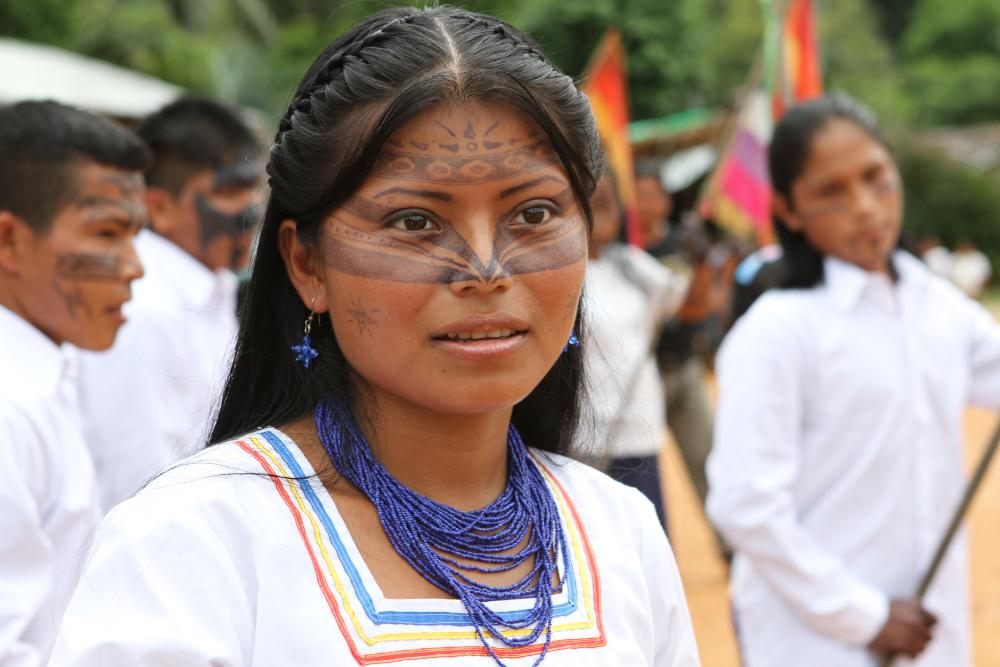
In decision-making, the voices and decisions of women as well as those of men, the wisdom keepers and the youth are very important. Elections are generally by consensus, where necessary by secret ballot. The office of Kuraka lasts one year, whereas the Tayak Apu (President) and the others leaders serve for three years.
The People of Sarayaku are masters in the selective use of modern technology (digital mapping of resources, social networks, etc.) without ever losing their cultural identity. If you imagine a utopian vision of the future, which aspects of indigenous wisdom does it include and which aspects of Western knowledge?
The impact of any technology depends on human behaviour. If well used, technology can serve to strengthen new processes of collective and organized adaptation. Based on this logic and analysis, the People of Sarayaku have adopted certain tools, such as the internet, which we use to disseminate the processes resistance in defence of our lives; to make known the proposals that come from within the territory and from the deep jungle. The jungle society has always been in a state of interaction, active looking for solutions for threats such as climate change.
Historically, it was impossible to make visible Sarayaku's proposals in a dominant, complex world, full of wars and devastating economic conflicts. Now, with these new technologies, we can successfully disseminate communications on history, culture, proposals, visionary projects to conserve and protect the balance of the land and ensure the continuity of the Living Forest.
These technologies have also allowed us to safeguard the memories of art, culture and stories, so that future generations can continue learning. At the beginning, stone technologies were inventions that served to advance society in many ways. Today, the machete serves to prepare the land, a shotgun to hunt, the internet to communicate and generate social networks. If badly used these tools become dangerous and violent, like the dollar, but if well used they can support the demand for rights. We believe that it is necessary to face the globalized world without creating a jagged wall because sooner or later that wall would be the end of our history. For us the strategy is to adapt these tools to strengthen the organization.
The Sarayaku people are currently facing a double disaster. Just after the pandemic arrived in March, a devastating flood hit the community. Tell us about the impact of the flood.
Personally, I had a fortunate escape from the flood. On March 17 of this year, just when the Health Emergency measures were issued, a torrential rain had fallen on the headwaters of the Bobonaza River. That day, I was due to travel to Sarayaku by canoe with a group of 11 people, including children, elderly people and my daughter, Samai. At the Challawayaku port, I found that the Bobonaza River had not grown much, it was navigable. So, I took the decision to set sail at 4:30pm, calculating that I could arrive in Sarayaku after nightfall. However, the canoe’s engine did not start and we had to sleep outside at the port. This turned out to be a fortunate turn of events because, had we managed to set out that day, we would surely have perished. We later discovered that the Bobonaza River had flooded further downstream and a bridge had collapsed, forming a dam-like barrier across the river. In the dark, the canoe would inevitably have crashed heavily against the bridge and sunk. The engine’s failure to start saved all our lives.
Several communities in the Bobonaza river basin faced a double disaster due to the health emergency and the flood, among them Sarayaku. The major impact of the flood was on food security, due to the massive destruction of chacras (food gardens), staple crops such as corn and plantain, chicken coops and fish ponds.
In Sarayaku, the scene was terrible, truly calamitous. Almost 90% of the population suffered material and psychological damage. More than thirty houses were damaged or destroyed. The river also razed several bridges including the main one that crosses the Bobonaza River, and several educational centres, including the Tayak Wasi (School of the Living Jungle) and the Sasi Wasi (the Centre for Strengthening the Practice of Ancestral Medicine).
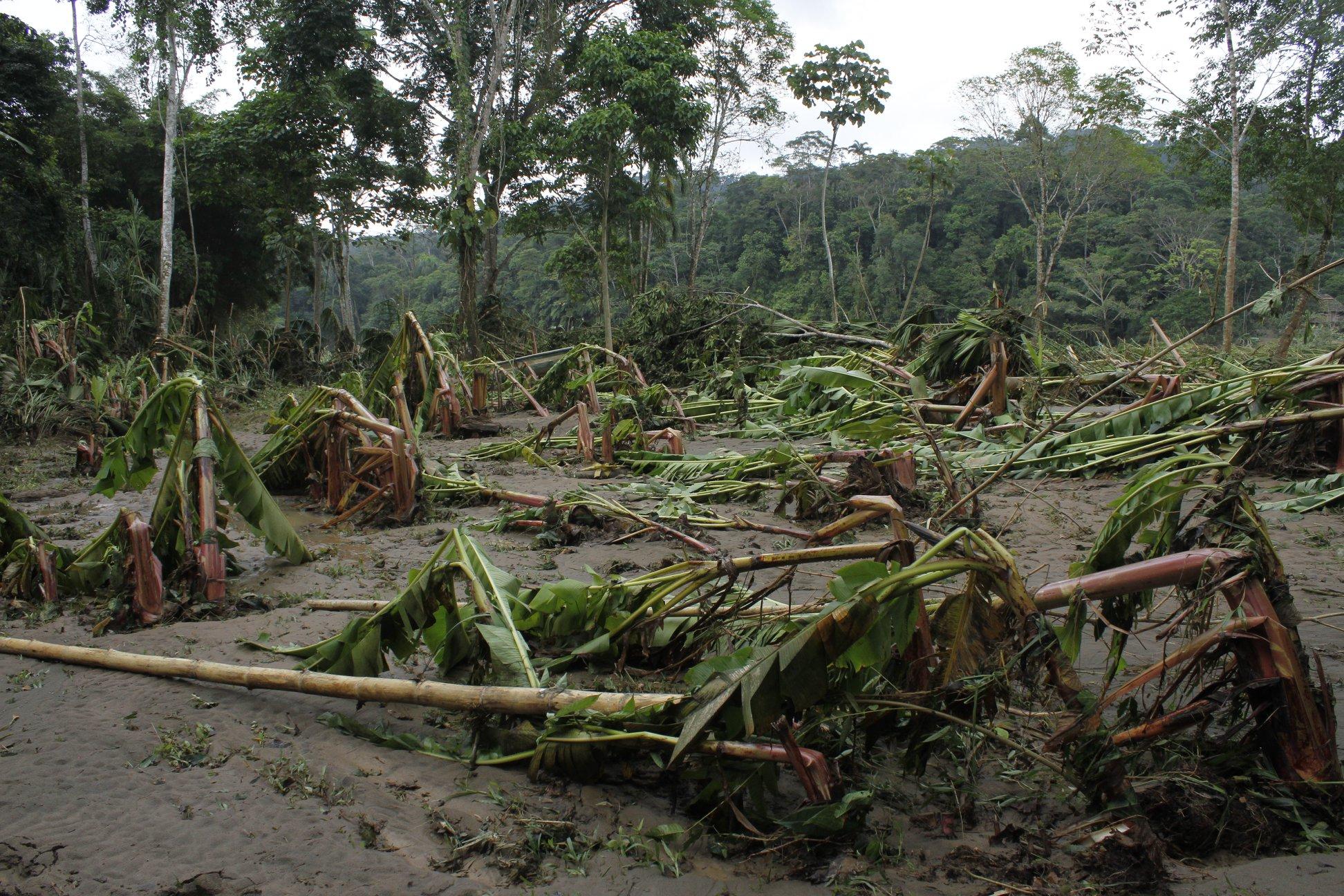
The Tayak Wasi School of the Living Jungle (also known as the School of Peaceful Resistance) was founded in 1994 to strengthen and teach ancestral knowledge and bilingual intercultural education (in Kichwa and Spanish). A new generation of leaders was trained at the school, where they learned about art, history, knowledge of the forest, philosophy, the Kichwa worldview, and the philosophical thought of the Living Jungle.
Sadly, the Tayak Wasi school was washed away by the river on March 17 due to the most severe flooding seen in Sarayaku for 150 years. Now it remains a memory, a symbol of peaceful struggle, of the formation of thought and communion with the Living Jungle. The Sasi Wasi, where we conducted spiritual rituals and studied medicinal and sacred plants and preventive health, was also reduced to rubble.
The outlook is bleak and sad. The restoration of these places represents a complex problem. We have decided to relocate them out of the risk zone to safer areas. This will give the State one less reason to refuse to administratively recognize the school, which it has already tried to close for not complying with the official and western teaching model.
Tayak Wasi and Sasi Wasi, two visionary projects for the protection of culture, biodiversity and life, are part of an important plan of the Association for the Strengthening of Knowledge & Ancestral Wisdom of Sarayaku (ATAYAK). Within this plan there are two other important axes: the Sacharuya (Botanical Center for the Rescue of Biodiversity and Strengthening of Economic & Food Sovereignty); and the Sisa Ñampi (Living Path of Flowers).
WR: How can people in other countries support the Sarayaku struggle?
JG: People can support the Sarayaku’s struggle through dissemination and creating communication networks. They can carry our message at world conferences. It is important to denounce the capital of extractive corporations.
People can financially support our life projects, such as the Living Path of Flowers and the reconstruction of the Tayak Wasi and Sasi Wasi, which have been born from Sarayaku’s own vision. It is important to identify the life projects of indigenous peoples and support their own solutions, in which they are the principal actor in their own remediation. This support should be offered without imposition, exercising the true model of democracy, recognizing the autonomy and self-determination of these peoples. Global funds should be directed towards the life projects of indigenous peoples, which are ignored by the State and allied organizations, despite Ecuador being constitutionally decreed as a “plurinational State”. Our vision is to establish a territorial indigenous government that breaks the colonial scheme, restores rights and banishes the institutional discrimination and marginalization that exists today.
WR: It is possible to make a financial donation to the Sarayaku’s life projects here.
For more information, see the Sarayaku website and Facebook page (both in Spanish) and the website for the Kawsak Sacha (Living Forest) Declaration (in English). The Sarayaku’s documentary, Children of the Jaguar, about their legal battle at the Inter-American Court of Human Rights, can be watched here. José Gualinga can be contacted via email at [email protected]
José Gualinga was interviewed by Beth Pitts, who has been working with indigenous communities in Ecuador since 2013, especially those defending their territories from extractivism. From these defenders, Beth learned that community-led eco-tourism enables them to protect threatened ecosystems and unique ways of life. This inspired her to write Moon Guide to Ecuador & The Galapagos Islands (2019), the first international guidebook on Ecuador with a focus on ethical travel.
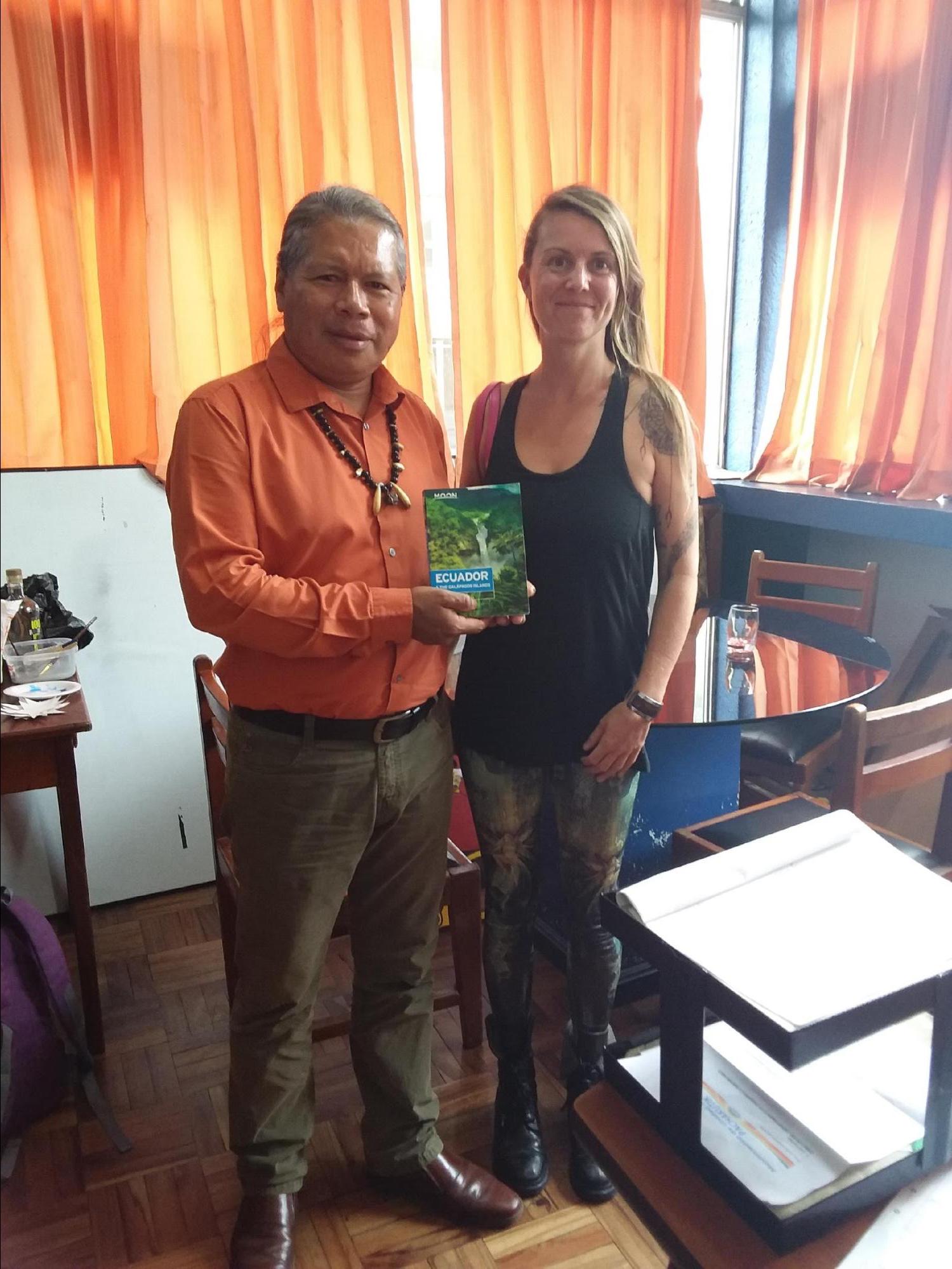
Beth is part of the Writers Rebel team and is excited by the alchemic possibilities of uniting the two forces that give her the most hope for the future: indigenous nature defenders and Extinction Rebellion.
